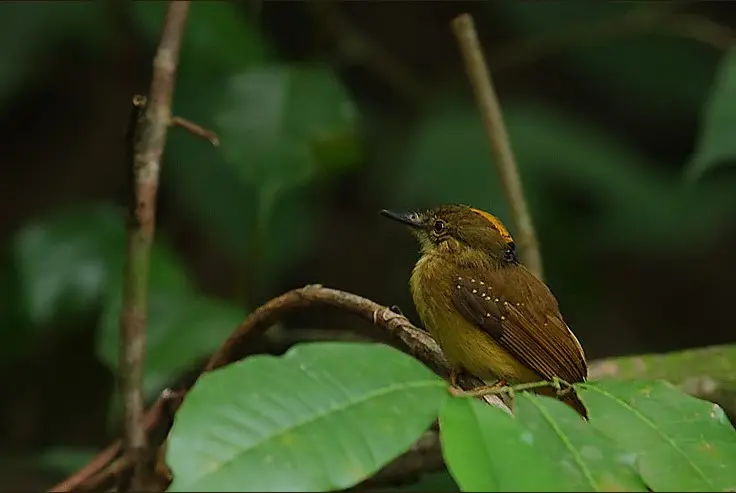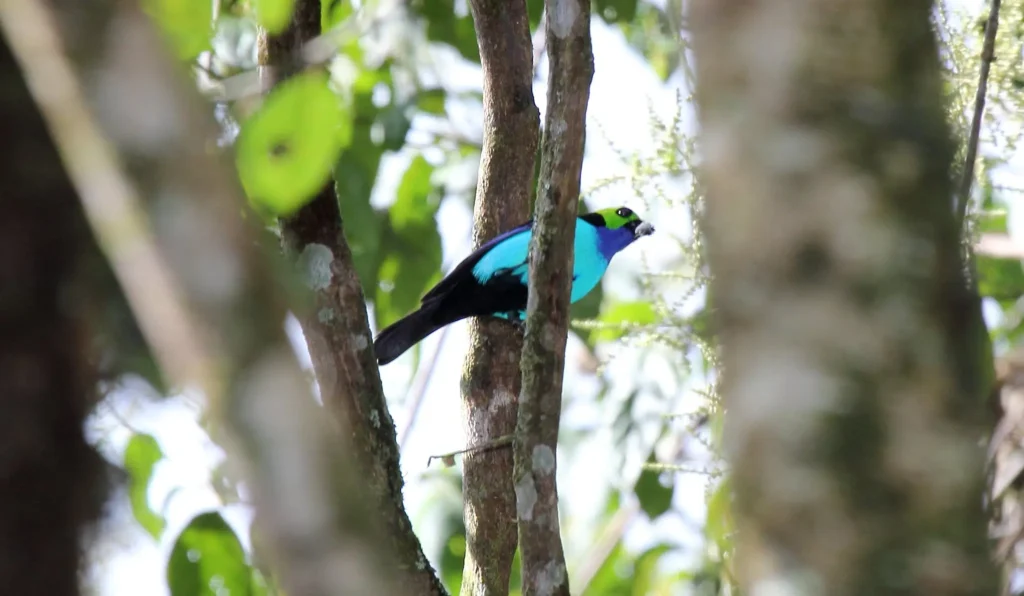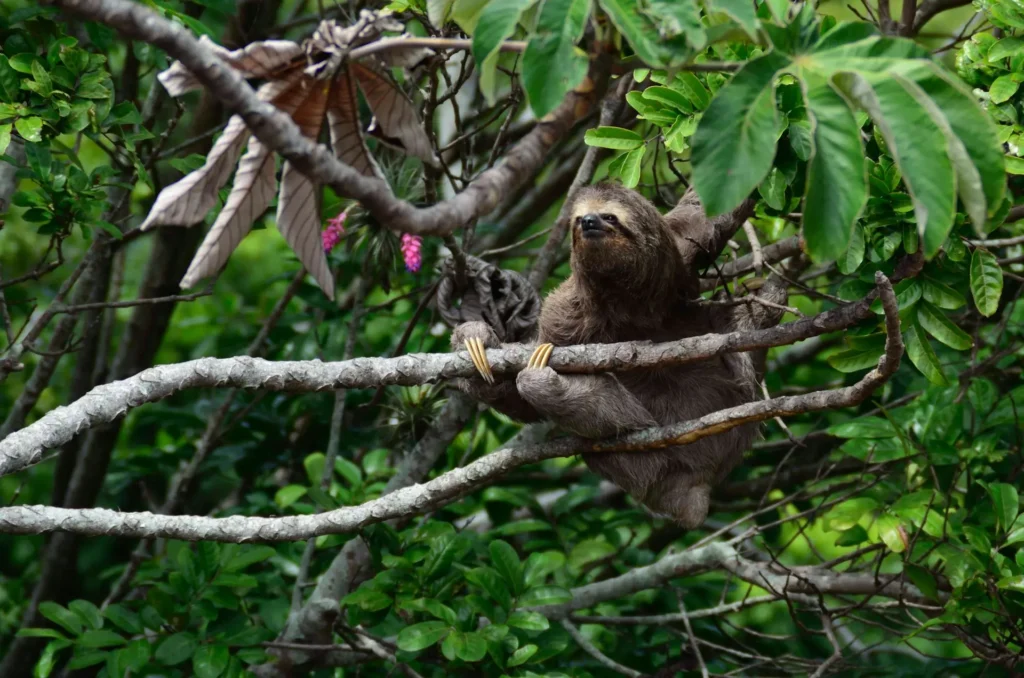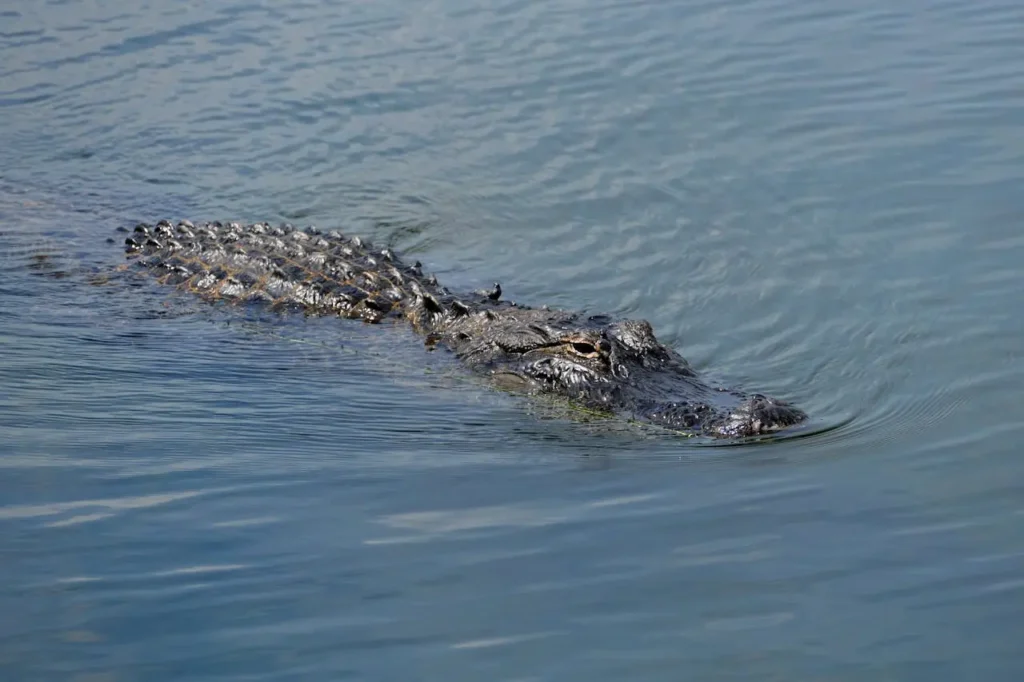The Amazon rainforest in Peru is one of the most fascinating destinations on the planet, and is home to an incredible diversity of Amazon rainforest animals. This region, known for its unparalleled biodiversity, is a paradise for nature and adventure lovers. Here, green immensity intertwines with wildlife in a spectacle of flora and fauna that has no equal. With more than half of the world’s rainforests concentrated in this area, the Peruvian Amazon becomes an ideal setting to experience nature in its purest form and discover the amazing Amazonian jungle animals that inhabit it.
Why Explore the Amazon Rainforest in Peru?
Visiting the Amazon rainforest in Peru is not just a trip, it is an immersion in a vibrant world full of life. Every corner hides a surprise, from the smallest insect to the imposing trees that seem to touch the sky. Regardless of the time of year, the jungle always offers the opportunity to observe animals in their natural habitat, making each visit a unique and enriching experience.
Birds of the Amazon Rainforest
The Peruvian Amazon is a birdwatcher’s paradise, with more than 1,800 species recorded. Among the most spectacular and fascinating birds are some that not only delight the eye, but also play crucial ecological roles in seed dispersal and insect control.
Macaw
Macaws are vibrant and charismatic birds that light up the Amazon rainforest canopy with their brightly colored feathers. These birds are highly intelligent and live in family groups that they maintain throughout their lives. Macaws feed mainly on fruits and nuts, using their strong beaks to break hard shells. They can often be seen flying in pairs or groups, and their cries can be heard echoing through the forest.

Cotinga Sequins
Spangled cotingas are small birds with electric blue plumage on males, which they use to attract females. They feed on fruits and are usually found in the middle and upper levels of the forest. Although they are difficult to spot due to their small size and fast movements, their bright color gives them away when moving in sunlight.

Toucan
The toucan is famous for its huge, colorful beak, which is often longer than its own body. This beak is not only decorative, but also helps them to pick fruits that other animals cannot reach. Toucans are social birds that move in small groups and are often seen hopping between trees, taking advantage of their ability to move through the canopy.

Royal Flycatcher
The royal flycatcher is known for its spectacular brightly colored crest, which it displays in times of excitement or to intimidate rivals. Although they are relatively small birds, their presence is notable because of their striking displays and unique song. They feed on insects, which makes them important in pest control.

Paradise Tanager
Paradise tanagers are small but beautiful birds with multicolored plumage that includes shades of blue, green, red and yellow. These birds feed on fruits and insects and move in small groups through the forest canopy. They are essential for seed dispersal, helping to maintain the plant diversity of the Amazon rainforest.

Mammals of the Amazon Rainforest
The mammals of the Amazon are some of the most emblematic and recognizable animals of the region. They range from noisy primates to massive terrestrial creatures, all adapted to life in one of the world’s most complex environments.
Red Howler Monkey
Red howler monkeys are one of the noisiest species in the Amazon rainforest, known for their howls that can be heard for miles around. With their deep red fur and long beards, these monkeys spend much of their time resting in the treetops. Their diet is mainly based on leaves, although they also eat fruits and flowers, allowing them to survive in abundance without having to move around too much. The ability to communicate over long distances helps them defend their territory and keep in contact with their group.

Pink River Dolphin
The pink dolphin, also known as the Amazon river dolphin, is one of the most magical and enigmatic animals of the Amazon rainforest. These freshwater dolphins are easily recognizable by their pink color, which intensifies with age and physical activity. Unlike their marine counterparts, pink dolphins have a flexible skull that allows them to efficiently navigate among submerged roots and fallen tree branches in the water. They are seen as almost mythical creatures in Amazonian culture, with stories of them transforming into humans at dusk.

Amazon Tapir
The Amazonian tapir is the largest land mammal in the Amazon rainforest. With a robust body and a short, flexible trunk, the tapir uses its snout to grasp leaves and fruits high in the forest. Tapirs are excellent swimmers and enjoy spending time in the water, using their trunk as a snorkel to breathe as they dive. They can be shy, but are essential for seed dispersal throughout large areas of the forest, contributing to the life cycle of many Amazonian plants.

Sloth
Sloths are iconic animals of the Amazon, known for their extremely slow life and long periods of inactivity. They can sleep up to 18 hours a day, and their low metabolism allows them to survive on an exclusively herbivorous diet composed of leaves. Sloths are perfectly adapted to arboreal life and rarely descend to the ground, where they become vulnerable to predators. In addition, they are excellent swimmers and occasionally move between trees through rivers.

Capybara
The capybara, or capybara, is the world’s largest rodent and one of the most social and adaptable animals in the Amazon rainforest. With partially webbed feet, capybaras are efficient swimmers and spend most of their time near bodies of water. Their social behavior is remarkable, as they tend to live in large groups and exhibit a complex hierarchical structure. They can often be seen resting in mud or bathing in ponds, which protects them from heat and insects.

Reptiles of the Amazon Rainforest
The reptiles of the Amazon are some of the most formidable and adaptable predators on the planet. From giant snakes to unique turtles, these animals have evolved to survive in the extreme conditions of the jungle.
Side Neck Turtle
The side-necked turtle is easily recognized by the way it bends its neck laterally instead of retracting into the shell. These turtles inhabit rivers and lakes in the Amazon, where they feed on small fish and aquatic plants. They are an essential part of the aquatic ecosystem, maintaining balance by consuming decaying material and controlling populations of small invertebrates.

Black Caiman
The black caiman is the top predator of the Amazon, capable of hunting prey as large as jaguars and capybaras. These massive reptiles can reach impressive sizes and are known for their ability to ambush their prey silently. They prefer the calm waters of rivers and lakes, where they can spend hours motionless waiting for their next meal to pass by.

Green Anaconda
The green anaconda is one of the largest and most powerful snakes in the world. It inhabits the swamps and slow-moving rivers of the Amazon rainforest, where it feeds on a variety of prey, from fish and birds to large mammals. Despite its intimidating size, the anaconda is a patient and efficient hunter, capable of remaining motionless for long periods while stalking its prey.

Poison Dart Frog
Poison dart frogs are known for their bright colors and potent venom, which they use as a defense against predators. Although small, these frogs are formidable in their habitat, and their colors act as a clear warning to other animals. There are multiple species of poison dart frogs in the Amazon, each with its own color pattern and level of toxicity.

Bicolor Tree Frog
The bicolored tree frog is a fascinating example of adaptation in the Amazon. With its waxy skin, this frog can avoid dehydration in the humid conditions of the forest. Its diet consists mainly of insects, and it is often found camouflaged among the leaves, where it uses its bright green color to blend in with its surroundings.

Explore the Amazon Rainforest with Travel Peru Agency
Don’t miss the opportunity to explore the Amazon rainforest in Peru with Travel Peru Agency! Discover the richness of the wildlife, immerse yourself in the exuberance of nature and live an unforgettable adventure with our customized tours. Whether you have time for a 4-day tour or prefer a shorter 3-day experience in Iquitos, our expert guides will make every moment memorable.
For more information and to book your tour, visit Travel Peru Agency – your next Amazon jungle adventure awaits!
Frequently Asked Questions
What animals can be seen in the Peruvian Amazon rainforest?
In the Peruvian Amazon rainforest you can see a wide variety of animals, including mammals such as the howler monkey and the Amazonian tapir, birds such as macaws and toucans, and reptiles such as the green anaconda and the black caiman.
What makes the fauna of the Amazon rainforest unique?
The fauna of the Amazon is unique because of its great biodiversity and special adaptations that allow species to survive in a complex and changing tropical environment.
Is it safe to see animals in the Amazon rainforest?
Yes, it is safe to see animals in the Amazon if done with an experienced guide who knows wildlife behaviors and best practices for safe observation.
How can you see animals in the Amazon rainforest?
The best way to see Amazon rainforest animals is to join a guided tour with local experts who know the species’ habitats and activity schedules.
When is the best time to visit the Amazon rainforest in Peru?
The Peruvian Amazon rainforest can be visited at any time of the year, but the dry season, from May to October, offers more comfortable conditions for exploration, as there are fewer mosquitoes and it is easier to move along the trails.
Is it safe to visit the Amazon rainforest in Peru?
Yes, it is safe to visit the Amazon rainforest in Peru, especially when you take a tour with expert guides. They know the risks and precautions necessary to ensure a safe and enriching experience.
How can I see pink dolphins in the Amazon?
Pink dolphins can be seen in the waters of the Amazon, especially near Iquitos. Boat tours are the best way to observe these animals in their natural habitat.
Are there recommended tours to explore the Peruvian Amazon rainforest?
Yes, there are several recommended tours, such as the 4-day tour in Iquitos, which offers a complete experience of the wildlife and local culture.
What clothes should I bring for an Amazon jungle tour?
It is recommended to bring light clothing with long sleeves, comfortable and waterproof shoes, a hat, and insect repellent to protect you from mosquitoes.
